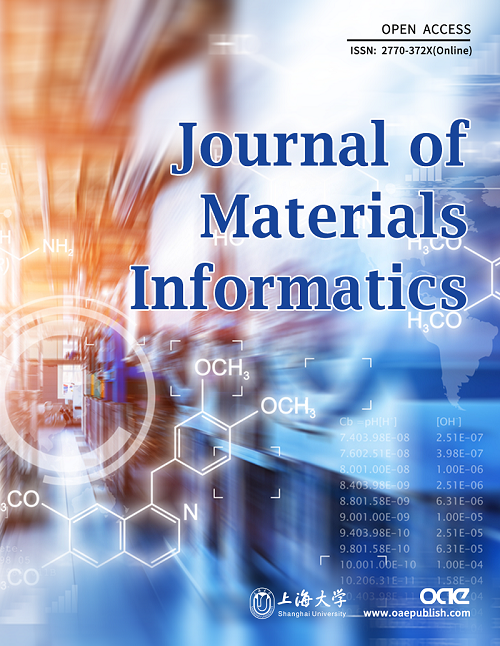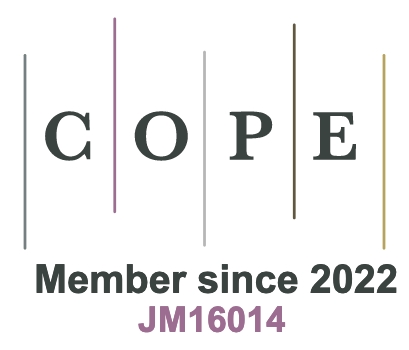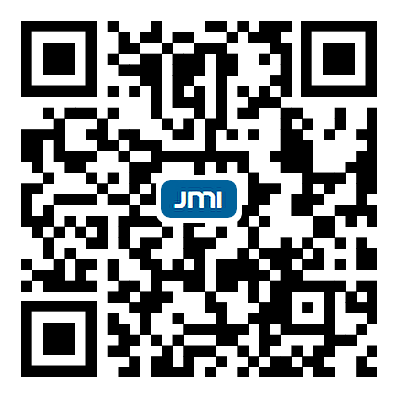REFERENCES
1. Yeh JW, Chen SK, Lin SJ, et al. Nanostructured high-entropy alloys with multiple principal elements: novel alloy design concepts and outcomes. Adv Eng Mater 2004;6:299-303.
2. Miracle DB, Senkov ON. A critical review of high entropy alloys and related concepts. Acta Mater 2017;122:448-511.
3. Li W, Xie D, Li D, Zhang Y, Gao Y, Liaw PK. Mechanical behavior of high-entropy alloys. Prog Mater Sci 2021;118:100777.
4. Nair RB, Arora HS, Mukherjee S, Singh S, Singh H, Grewal HS. Exceptionally high cavitation erosion and corrosion resistance of a high entropy alloy. Ultrason Sonochem 2018;41:252-60.
5. Gorr B, Azim M, Christ HJ, Mueller T, Schliephake D, Heilmaier M. Phase equilibria, microstructure, and high temperature oxidation resistance of novel refractory high-entropy alloys. J Alloys Compd 2015;624:270-8.
6. Gludovatz B, Hohenwarter A, Catoor D, Chang EH, George EP, Ritchie RO. A fracture-resistant high-entropy alloy for cryogenic applications. Science 2014;345:1153-58.
7. Senkov ON, Wilks GB, Miracle DB, Chuang CP, Liaw PK. Refractory high-entropy alloys. Intermetallics 2010;18:1758-65.
8. Senkov ON, Wilks GB, Scott JM, Miracle DB. Mechanical properties of Nb25Mo25Ta25W25 and V20Nb20Mo20Ta20W20 refractory high entropy alloys. Intermetallics 2011;19:698-706.
9. Zhang X, Chen Y, Hu J. Recent advances in the development of aerospace materials. Prog Aerosp Sci 2018;97:22-34.
10. Steingrimsson B, Fan X, Feng R, Liaw PK. A physics-based machine-learning approach for modeling the temperature-dependent yield strengths of medium- or high-entropy alloys. Appl Mater Today 2023;31:101747.
11. Senkov ON, Jensen JK, Pilchak AL, Miracle DB, Fraser HL. Compositional variation effects on the microstructure and properties of a refractory high-entropy superalloy AlMo0.5NbTa0.5TiZr. Mater Design 2018;139:498-511.
12. Jensen JK, Welk BA, Williams REA, et al. Characterization of the microstructure of the compositionally complex alloy Al1Mo0.5Nb1Ta0.5Ti1Zr1. Scripta Mater 2016;121:1-4.
13. Silver D, Huang A, Maddison CJ, et al. Mastering the game of Go with deep neural networks and tree search. Nature 2016;529:484-9.
14. Huang W, Bai XM. Machine learning based on-the-fly kinetic Monte Carlo simulations of sluggish diffusion in Ni-Fe concentrated alloys. J Alloys Compd 2023;937:168457.
15. Liu X, Xu P, Zhao J, Lu W, Li M, Wang G. Material machine learning for alloys: applications, challenges and perspectives. J Alloys Compd 2022;921:165984.
16. Xiao L, Wang G, Long W, Liaw PK, Ren J. Fatigue life prediction of the FCC-based multi-principal element alloys via domain knowledge-based machine learning. Eng Fract Mech 2024;296:109860.
17. Wei G, Byggmästar J, Cui J, Nordlund K, Ren J, Djurabekova F. Effects of lattice and mass mismatch on primary radiation damage in W-Ta and W-Mo binary alloys. J Nucl Mater 2023;583:154534.
18. Zhu Y, Cui J, Guo X, Ren J. Multi-component thin films and coatings. Mater Design 2024;238:112664.
19. Xiao L, Guo XX, Sun YT, et al. Sparse identification-assisted exploration of the atomic-scale deformation mechanism in multiphase CoCrFeNi high-entropy alloys. Sci China Technol Sci 2024;67:1124-32.
20. Rickman JM, Chan HM, Harmer MP, et al. Materials informatics for the screening of multi-principal elements and high-entropy alloys. Nat Commun 2019;10:2618.
21. Xiong J, Shi SQ, Zhang TY. Machine learning of phases and mechanical properties in complex concentrated alloys. J Mater Sci Technol 2021;87:133-42.
22. Khatavkar N, Singh AK. Highly interpretable machine learning framework for prediction of mechanical properties of nickel based superalloys. Phys Rev Mater 2022;6:123603.
23. Couzinie JP, Senkov ON, Miracle DB, Dirras G. Comprehensive data compilation on the mechanical properties of refractory high-entropy alloys. Data Brief 2018;21:1622-41.
24. Stepanov ND, Yurchenko NY, Zherebtsov SV, Tikhonovsky MA, Salishchev GA. Aging behavior of the HfNbTaTiZr high entropy alloy. Mater Lett 2018;211:87-90.
25. Song HQ, Tian FY, Wang DP. Thermodynamic properties of refractory high entropy alloys. J Alloys Compd 2016;682:773-7.
26. Lin CM, Juan CC, Chang CH, Tsai CW, Yeh JW. Effect of Al addition on mechanical properties and microstructure of refractory AlxHfNbTaTiZr alloys. J AlloysCompd 2015;624:100-7.
27. Hou S, Sun M, Bai M, Lin D, Li Y, Liu W. A hybrid prediction frame for HEAs based on empirical knowledge and machine learning. Acta Mater 2022;228:117742.
28. Gschneidner K, Russell A, Pecharsky A, et al. A family of ductile intermetallic compounds. Nature Materials 2003;2:587-90.
29. Zhang X, Li W, Ma J, Li Y, Zhang X, Zhang X. Modeling the effects of grain boundary sliding and temperature on the yield strength of high strength steel. J Alloys Compd 2021;851:156747.
30. Takeuchi A, Inoue A. Classification of bulk metallic glasses by atomic size difference, heat of mixing and period of constituent elements and its application to characterization of the main alloying element. Mater Trans 2005;46:2817-29.
31. Cai J, Luo J, Wang S, Yang S. Feature selection in machine learning: a new perspective. Neurocomputing 2018;300:70-9.
32. Lu W, Xiao R, Yang J, Li H, Zhang W. Data mining-aided materials discovery and optimization. J Materiomics 2017;3:191-201.
33. Zhang H, Fu H, He X, et al. Dramatically enhanced combination of ultimate tensile strength and electric conductivity of alloys via machine learning screening. Acta Mater 2020;200:803-10.
34. Liddle AR. Information criteria for astrophysical model selection. Mon Not R Astron Soc 2007;377:L74-8.
35. Akaike H. A new look at the statistical model identification. IEEE T Automat Contr 1974;19:716-23.
36. Wang C, Zhong W, Zhao JC. Insights on phase formation from thermodynamic calculations and machine learning of 2436 experimentally measured high entropy alloys. J Alloys Compd 2022;915:165173.
37. Li GN, Zheng Y, Liu JY, et al. An improved stacking ensemble learning-based sensor fault detection method for building energy systems using fault-discrimination information. J Build Eng 2021;43:102812.
38. Stefenon SF, Ribeiro MHDM, Nied A, et al. Time series forecasting using ensemble learning methods for emergency prevention in hydroelectric power plants with dam. Electr Pow Syst Res 2022;202:107584.
39. Mishra A, Kompella L, Sanagavarapu LM, Varam S. Ensemble-based machine learning models for phase prediction in high entropy alloys. Comput Mater Sci 2022;210:111025.
40. Zhang YF, Ren W, Wang WL, et al. Interpretable hardness prediction of high-entropy alloys through ensemble learning. J Alloys Compd 2023;945:169329.
41. Chen Q, He Z, Zhao Y, et al. Stacking ensemble learning assisted design of Al-Nb-Ti-V-Zr lightweight high-entropy alloys with high hardness. Mater Design 2024;246:113363.
42. Jiang H, Zheng W, Dong Y. Sparse and robust estimation with ridge minimax concave penalty. Inform Sci 2021;571:154-74.
43. Jiang H, Tao C, Dong Y, Xiong R. Robust low-rank multiple kernel learning with compound regularization. Eur J Oper Res 2021;295:634-47.
44. Jiang H, Luo S, Dong Y. Simultaneous feature selection and clustering based on square root optimization. Eur J Oper Res 2021;289:214-31.
46. An Z, Mao S, Yang T, et al. Spinodal-modulated solid solution delivers a strong and ductile refractory high-entropy alloy. Mater Horiz 2021;8:948-55.
47. Ding XY, Zheng HY, Zhang PP, Luo LM, Wu YC, Yao JH. Microstructure and mechanical properties of WTaVCrTi refractory high-entropy alloy by vacuum levitation melting for fusion applications. J Mater Eng Perform 2022;32:7869-78.
48. Huang R, Wang W, Li T, et al. A novel AlMoNbHfTi refractory high-entropy alloy with superior ductility. J Alloys Compd 2023;940:168821.
49. Jiang W, Wang X, Li S, Ma T, Wang Y, Zhu D. A lightweight Al0.8Nb0.5Ti2V2Zr0.5 refractory high entropy alloy with high specific yield strength. Mater Lett 2022;328:133144.
50. Ma X, Hu Y, Wang K, et al. Microstructure and mechanical properties of a low activation cast WTaHfTiZr refractory high-entropy alloy. China Foundry 2022;19:489-94.
51. Goldstein A, Kapelner A, Bleich J, Pitkin E. Peeking inside the black box: visualizing statistical learning with plots of individual conditional expectation. J Comput Graphical Stat 2015;24:44-65.
52. Apley DW, Zhu J. Visualizing the effects of predictor variables in black box supervised learning models. J R Stat Soc B 2020;82:1059-86.
53. Kusdhany MIM, Lyth SM. New insights into hydrogen uptake on porous carbon materials via explainable machine learning. Carbon 2021;179:190-201.
54. Rodríguez-Pérez R, Bajorath J. Interpretation of machine learning models using shapley values: application to compound potency and multi-target activity predictions. J Comput Aided Mol Des 2020;34:1013-26.
55. Ren J, Xiao L. Physics-guided neural network for fatigue life prediction of FCC-based multi-principal element alloys. Scripta Mater 2024;253:116307.
56. Lee C, Kim G, Chou Y, et al. Temperature dependence of elastic and plastic deformation behavior of a refractory high-entropy alloy. Sci Adv 2020;6:eaaz4748.
57. Startt J, Kustas A, Pegues J, Yang P, Dingreville R. Compositional effects on the mechanical and thermal properties of MoNbTaTi refractory complex concentrated alloys. Mater Design 2022;213:110311.
58. Xue J, Shen B. Dung beetle optimizer: a new meta-heuristic algorithm for global optimization. J Supercomput 2022;79:7305-36.








